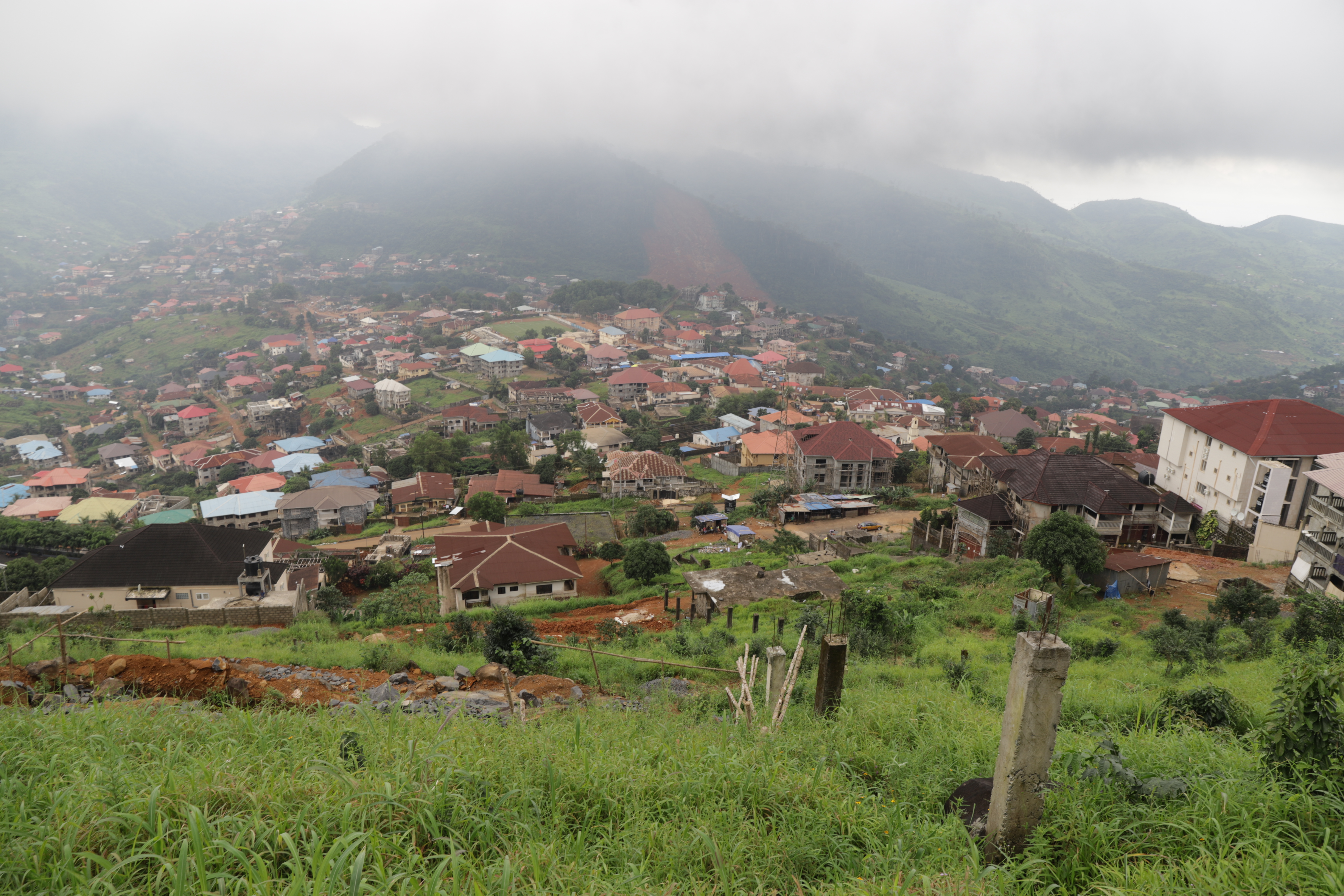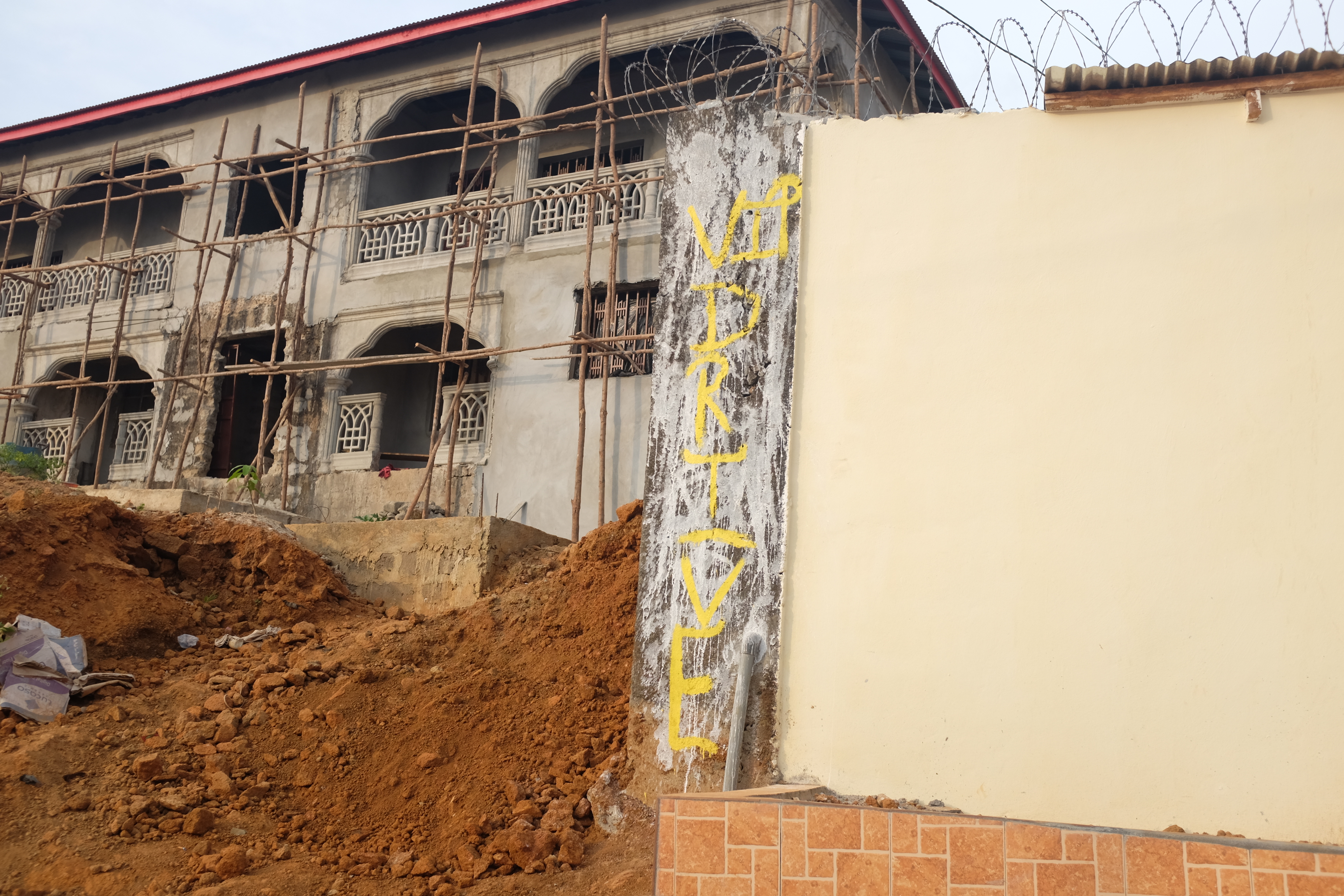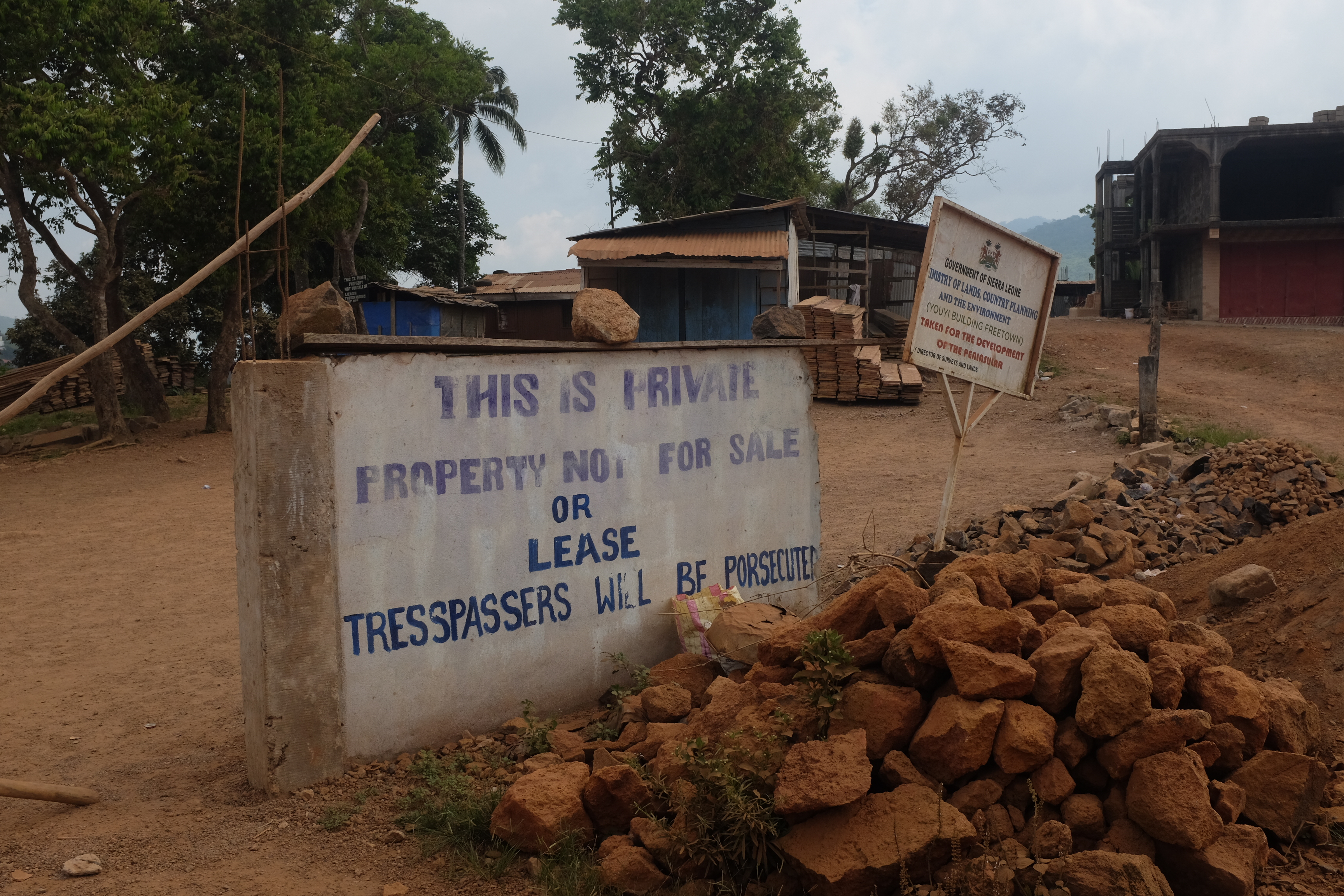Award Holder: Nile Davis
University: Columbia University, New York
Title of Research: Becoming Natives: Presence and the Politics of Place in Sierra Leone
My dissertation investigates the history and ethnography of post-war reconstruction in Sierra Leone at the beginning of the 21st century. It does so through an ethnographic account of the political economies, sensibilities, landscapes and communities of labour formed in the wake of social recovery amidst a cluster of monumental structures between 2002 and 2006: most notably, the sprawling 13-acre 60-million-dollar compound of the United States Embassy in Freetown, constructed by American and Turkish contractors, Caddell-Enka, at the edge of a mountainous forest reserve. Rural migrants, who lived by the labors of the embassy, built vast concrete mansions and high-capacity evangelical churches in the adjacent valleys – steep hills, subject to forms of mass wasting: flooding, rockfalls and mudslides. This landscape, my investigation finds, is host to a precarious class that subsists by its proximity to the wages of dangerous construction work, its attendant ecological harms and bodily burdens.

Drawing on 15 months of fieldwork, archival research, spatial analysis and photography in the Western Area of Sierra Leone between 2016 and 2019, I explore the layered material and social histories of the region, refigured by an increasing concentration of esoteric wealth – conditions of material disparity reflecting the crisis of relation between ends and means, and the anxieties of “community”. What, I ask, is the valence of reconstruction as metaphor and as social practice in the wake of catastrophe? How has it come to figure in contemporary Sierra Leone as a field of political possibility and the history of reformative and disciplinary projects for land, life and labour? And how have such spaces been marked by the paradoxes of what we have come to call modernity, and the conjunctions of architecture, materiality and capital in which they sit?
* * *
In 2006, remarking on their installation of a sprinkler system for the new U.S. Embassy in Freetown, the Alabama construction firm, American Fire, noted: “The successful completion of this beautiful new facility in one of the poorest and most troubled parts of the world has played an important part in the healing process of this war-torn nation.” Such claims, avowing the transformative social and moral function of construction labour, were not uncommon in the years after the civil conflict in Sierra Leone, that lasted from 1991 to 2002. The semantic value of new buildings appeared to chime with the underlying aims of civil recuperation: the restoration of the social fabric in which architectural renewal assumed an ethical value. Many who drew wages on the embassy site and in the expanding urban frontiers of Freetown – as carpenters, steel benders and masoners – had been active conscripts of a “fratricidal” war that had claimed the lives of tens of thousands, displaced three million people and devastated much of the nation’s infrastructure. Military consultants, experts and humanitarian programs flooded into the country to arrest the traumas and elusive origins of rebellion. Millions of dollars were expended on the procurement of a lasting peace and the project of recovery under the aegis of programs for Disarmament, Demobilisation and Rehabilitation, or DDR. I study the archive and aftereffects of these efforts, in which over 70,000 exchanged their weapons for cash settlements and the implements with which to fashion their futures, mobilising systems for “self-help”, “psycho-social recovery”, “grassroots reconciliation” and the creation of “social capital”. Addressing the need for reconstruction in its most literal sense, the United Nations contracted the German development agency, GTZ, to destroy the disabled weapons, “recycling the cut pieces into productive tools.”

Such tools, I suggest, would become a powerful symbol of the promise and failures of peace among communities of men and women scattered by violence, shaping poor settlements at the edge of an expanding city, building vast mansions for the city’s elites and distant kin. Courted as the mediums of a peaceful state, I argue that these “DDR boys” might be understood as among the first beneficiaries of postwar capital that responded to the problem of social breakdown with dollar-funded projects addressed to the problem of poverty and civil violence as an object of recuperative labour. As thousands became the recipients of vocational training in the construction trades as the conditions for their “re-entry into the community”, programs in civics and vocational training urged for the return of rebels to their rural villages as farmers and peacemakers, oriented towards agrarian futures of disciplined and productive work.
I learned how others became manual labourers in the hilly outskirts of the expanding urban frontiers, building vast residential compounds for the city’s elites and remittance houses for distant relations in the West; drawing wages on the site of the US Embassy and IMATT, a British military installation, built in 2002 for the retraining of the country’s armed forces, “tasked with turning armed civilians with tribal instincts into professional, apolitical troops.” I consider the fates of my interlocutors, young men from the provinces, implicitly entangled in the labours of peace and reconstruction, building America’s extraterritorial spaces, their labour arranged beneath Caddell in a nest of contracts alongside Turkish and American “experts”.
At the reopening of the Bintumani Hotel in 2003 – a flagship modernist tower, devastated in the course of the city’s invasions in the late-1990s – President Tejan Kabbah promised to resolutely defy the destructive ideations of a “senseless war” with a programme of purposeful building conducted with the cooperation and aid of foreign partners, including Chinese state contractors. Amidst unemployment figures of over 80%, such projects would be marshaled by the raft of foreign technical assistance in the form of contractors like the China Railway Seventh Group, who continue to build hundreds of miles of new highways between major urban centers, replacing the old colonial roads and bridges in the Western Area. Yet the DDR training programs were more halting and limited in their effects. Lasting no more than a few months at a time, until the program’s termination in 2004, they offered only a rudimentary foundation in the labors of construction, with material and technical capabilities far removed from the task of large-scale projects in public works so badly needed in the post-war years. Observers and my informants described the erratic attendance of participants and propensities towards violence among the difficulties encountered by building contractors in the management of ex-combatants within the labour workforce.
In charting the narratives of those who came to find themselves subjects of harms, and the aftermaths of disaster, throughout these scenes I track how reconstruction stages conflicting claims upon urban space, the value of labour, and the moral status of prosperity under the guise of an ambiguous “development”. How do the fates of those who experience life under reconstruction provide us with a vantage point onto the means by which life is continually corrected, subject to the regimes of productivity and desires for exponential growth?
The focus of my research was expanded in four key areas. The first was to consider the political economy of land and government in Sierra Leone through the construction of concrete luxury homes in the emerging Freetown ‘communities’ of IMATT and SS Camp: largely poor migrant settlements at the rural margins of an expanding city. The emergence of these new settlements in the proximity of numerous historic Creole villages, populated by evangelical communities in the 19th century, led to renewed anxieties over the tenure of land and its conversion into private property in the region. Mansions for the rich constitute the moral problem space of these communities, denoting yawning material disparities embodied in the accumulation of property. The experiences of migrant workers in IMATT index the social relations that structure this peripheral landscape – host to an increasing concentration of arcane wealth and a precarious class that subsists by its proximity to the capital of construction labour and its attendant harms. By drawing ethnographic attention to the vernacular architectures of the ‘new money’ as it circulates through and refigures the built environment, my research develops an anthropology of the house as a locus of value and prestige, and how reconstruction economies yield volatile property markets.
This material focus revealed a second preoccupation: the need to conduct a historically-informed inquiry into the flows of speculative capital and its circulation in the course of post-civil war reconstruction. Through extensive ethnographic and archival research, I examined the transformative effects of capital and the discourse of national economy elaborated as part of the APC government’s ‘Agenda for Prosperity’ and the conditions that facilitated an increasing concentration of esoteric wealth in IMATT. Spurred by the false dawn of a transformative mineral ‘boom’ and a rush of foreign loans, prophesies of miraculous growth by institutions such as the World Bank and International Monetary Fund became the lodestar of the postwar government and its organising aims of national economic development. But these promises of impending fortune were inextricable from fundamental conditions of debt and reciprocity – the notion that the state and its actors must be held ‘accountable’.
At the same time, I examined the fates of poor inhabitants of these communities who, with limited access to this new capital, remained exposed to the burdens of quotidian harm through dangerous manual work, ‘brushing’ (clearing) the land and laying its infrastructures, building palaces for the newly wealthy. Such was the fate of a cohort that might be considered the first ‘generation’ of settlers in IMATT: men now in their 40s and 50s who moved here in the wake of the civil war. Routinely cast as ‘land-grabbers’, some of them were demobilised combatants who, in the years after the war, engaged in territorial ‘battles’ with police and government forces for control over the newly expanding urban frontier. The distinct topography of IMATT – a waterlogged and mountainous area subject to flooding and deadly rockfalls – was classified as ‘disaster-prone’, a designation embodied by the poor as subjects of “resilience” against a harmful landscape, while raising ambivalent concerns about the very habitability of the city itself. Taking this vexed space as my ‘field’ of ethnographic inquiry, I charted the collapse of Sugar Loaf Mountain in 2017 and its aftermath as it was experienced by the inhabitants of Matomeh, in the immediate impact zone of the landslide. Benevolence towards these citizens was performed by government in overtures towards their resettlement some 40 kilometers away in new houses in the area of Mile 6, outside of Freetown, before their relegation from official memory. In recorded interviews with individuals who termed themselves both ‘victims’ and ‘survivors’, we discussed the possibilities and limits of mobilising an affective community among those most impacted by the effects of the disaster. A limited number of those I met who claimed the status of ‘survivors’ became the recipients of material gifts: houses, money, mobile phones, blankets and bags of rice – charity for the dispossessed in the form of humanitarian supplies. But inherent to these gestures of generosity were protocols of verification characterised by practices of mutual recognition, determining who ‘belonged’ to the community – thus qualifying for assistance – and those who did not.

The ambiguity of this status, along with the relations of power and politics that governed the dispersal of these resources subjected some to a double dispossession: the violence of non-recognition and the refusal to acknowledge their claims of inclusion within the community of the bereaved. Individuals called upon kin from other places to come to Matomeh as recipients of aid. In considering the uses of a written register and its status in the local imagination, I suggest that such scenes might constitute the limits of ‘community’, indexing instead a troubled archive of past harms. These harms, my research has been able to demonstrate, unfold at varying temporalities – both slow and very fast; spectacular in scale and bureaucratic in nature.
These major paths converge towards a fourth: the discourse of ‘corruption’ – a rebus for the elusive logic of national economy in Sierra Leone. Figures in public office whose accumulation of property throughout the decade of APC rule appeared to represent profits ‘in excess’ of what was owed to them were made the subject of public scrutiny throughout commissions of inquiry into the conversion of public funds for ‘their own private use’. Deemed by members of the APC to signify a political ‘witch-hunt’, persons of interest ‘invited’ to attend televised daily hearings were ordered to declare their assets and offer narrative testimonies of their conduct under cross examination – to ‘account for’ these irregularities in the economic order of the state. Yet wealthy individuals deemed guilty of defrauding the state (and by extension, the people) were given the option of settlement out of court, paying back billions of Leones in misappropriated funds through highly publicised representations of financial redress.
The function of these investigations might be understood as a staging of economic justice – one in which the discrepant form of an ailing economy is visibly indexed through the confiscated houses. Revealed in confrontations over the regime of private property, performances of public accounting and their staging, I argue, reflect deeply rooted affects and anxieties concerning the ideological status of national economy, a virtually theological discourse, enfolding moral attributions and collective desires for immanent justice in the political realm.
